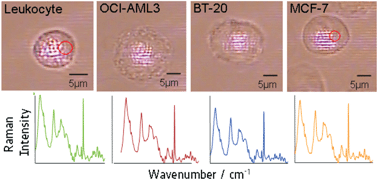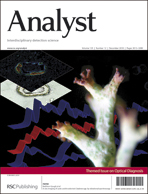Towards detection and identification of circulating tumour cells using Raman spectroscopy†
Abstract
Body fluids are easily accessible and contain valuable indices for medical diagnosis. Fascinating tools are tumour

- This article is part of the themed collection: Optical Diagnosis

 Please wait while we load your content...
Please wait while we load your content...